PinotFile: 9.18 January 19, 2013
|
Joseph Swan Vineyards Trenton Estate Pinot Noir Mini-VerticalThe legacy of winemaker Joseph (Joe) Swan has been well chronicled in the pages of the PinotFile (Volume 5, Issues 25 and 28, Volume 6, Issue 17). At the age of 45, in 1967, while employed as a pilot for Western Airlines, Swan bought a dilapidated 13-acre Zinfandel vineyard, barn and house on Laguna Road in the Russian River Valley near Forestville. The house had once been a general store and post office for the tiny town of Trenton that is no longer in existence. Today, this area of the Russian River Valley is referred to as the Santa Rosa Plains, an unofficial subdivision of the Russian River Valley AVA between the Laguna Ridges area to the West and the city of Santa Rosa to the East. The Santa Rosa Plains is only a few miles south of Westside Road and the Middle Reach subdivision of the Russian River Valley, but the climate here is distinctly cooler, foggier and wetter.
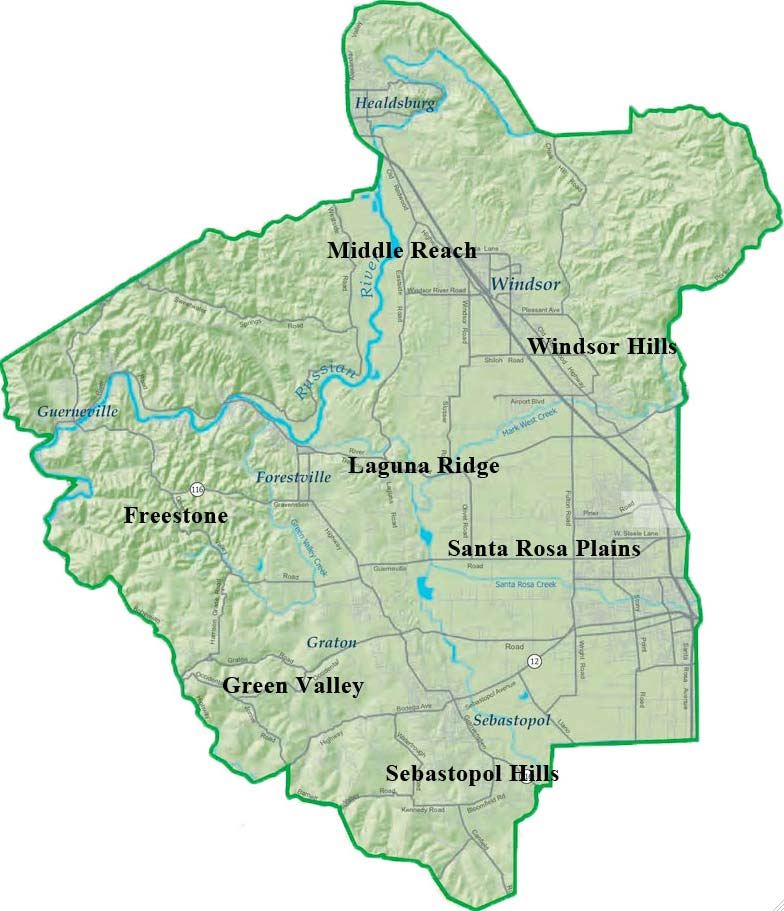 Swan searched Northern California for years before determining that the property he settled on was appropriate for fine wine grape growing. He retired from the airlines in 1968 and made Zinfandel from his property that year. The following year he began a replanting of the vineyard on the property, replacing the Zinfandel with Pinot Noir, Chardonnay and Cabernet Sauvignon. It was Joe's friend, Andre Tchelistcheff, who advised him to plant Burgundy varieties on this cool site. This coincided with Joe Rochioli’s plantings of the famous East Block of Pinot Noir at Rochioli Vineyard and only five years after Charles Bacigalupi planted Pinot Noir on Westside Road near Rochioli Vineyard at the former Goddard Ranch. According to John Haeger (Pacific Pinot Noir 2008, p. 213), and confirmed by Rod Berglund, the budwood for the Pinot Noir plantings at Swan’s vineyard most probably came from Mount Eden (via France, Paul Masson, and then Martin Ray) through the Experimental Station in Oakville. Some nursery selections were also planted but later abandoned. Swan marked the most redeeming vines in his vineyard and grafted the nursery selections over from wood he deemed the best. The resulting vine mix was later named the "Swan clone" by Francis Mahoney, the founder of Carneros Creek Winery. An additional block of Pinot Noir was planted just south of the original planting in 1974. Swan produced some very good and age worthy Pinot Noir from his plantings. The low-vigor soil at the site, Goldridge in type, has proven to be ideally suited for Pinot Noir and Swan’s vines prospered. The first vintage of Joseph Swan Pinot Noir was 1973, crafted with consultation from the legendary André Tchelistcheff who was a friend of Swan’s. Swan’s early Pinot Noirs, along with those of Davis Bynum, Dehlinger (who made his first vintage at Swan’s in 1975), and Rochioli, established the credibility of Russian River Valley Pinot Noir. Cuttings from Swan’s vines were eagerly sought after and became widely distributed to other vineyards as the Swan clone or Swan selection. Swan was a Burgundian at heart and traveled to France every year seeking to improve his winemaking skills. His companion was frequently wine importer Kermit Lynch who was fluent in French and translated for him. Swan experimented with whole cluster fermentation, manual punch downs, and the use of new French oak barrels, techniques that were unusual for California winemakers in the early 1970s. Anything he saw or heard about in Burgundy, he would try at home. Swan passed away from cancer in 1989, but his legacy will include the popularization of the traditional, Burgundian winemaking methods in California that often eschewed the teachings of UC Davis (Swan was no fan of the teachings of Davis’s Viticulture and Enology Department), his search for better clonal material, and his openness to new ideas. He was married four times, had at least seven kids, and died without leaving a will. Over the years, Swan periodically added new vines to his estate vineyard, including Dijon clones which he obtained from a French vigneron before the clones became available in the United States. After Swan’s passing, his son-in-law, Rod Berglund took over. Rod married Swan’s daughter, Lynn (her mother, June, was Swan’s fourth spouse), in 1986, and helped Swan with his last harvest in 1987. He has overseen the replanting of the estate vineyard, now named Trenton Estate Vineyard. In 1996, a 3.5-acre block planted to Pinot Noir, Chardonnay, and Cabernet Sauvignon, was removed and replaced with budwood from other estate Pinot Noir vines, plus Dijon clones 113, 114, 115, 667 and 777. Today, there are twelve different clones in the 13-acre Joseph Swan Trenton Estate Vineyard (8 acres of Pinot Noir), including DRC suitcase clones given to Joe as a gift by an unnamed individual many years ago. In addition, Berglund has modernized the trellis system, changing from Swan's version of head training to a bi-lateral vertical curtain system. This resulted in a reduction and softening of the tannins in the resulting wines. Farming is organic. The Joseph Swan Trenton Estate Vineyard Pinot Noir is the winery’s flagship bottling and has been produced annually since 1973 (but not designated as “Trenton Estate” on the label before the 1997 vintage). This wine was sourced entirely from the original 1969 and 1974 plantings until 2002, when some of the young vine fruit was included. Every vintage has come from the some piece of ground. The Trenton Estate Vineyard Pinot Noirs typically are rich, tannic and rustic initially, not unlike many Burgundy wines. After several years, they become much more approachable, turning earthy, savory, and nuanced, still with significant structure, and never only about fruit. The wines will easily age more than ten years, as shown by this vertical tasting. A number of tasters have noted some volatile acidity in the aromatics of some wines contributing to their “character,” and I found this in the 2003 vintage. In 2011, a vertical tasting of all 23 released vintages of Joseph Swan Trenton Estate Vineyard Pinot Noir (1973-2009) was organized in Northern California by Steve and Lisa Rigisich and attended by Rod Berglund: www.wineberserkers.com/forum/viewtopic.php?t=44845&p=604290. In 2006, I attended a tasting of eight Joseph Swan Pinot Noirs from the 1970s and 1980s (PinotFile, Volume 5, Issue 43). The wines displayed remarkable retention of fruit flavors with pleasing secondary characters and bouquet. All wines were drinkable with varying degrees of pleasure. The Trenton Estate Vineyard wines have a common thread, according to Berglund, in that they have a readily definable character unique to the site (so-called "Trenton spice"), and the site produces wines that are not only age worthy, but actually benefit from aging. Berglund’s winemaking regimen and evolution over the years is described in the Joseph Swan Vineyards Newsletter at www.swanwinery.com (Part Two, red wines, June 2011 Newsletter). The wines in the vertical tasting described here included 20%-25% whole cluster, were fermented with indigenous yeast to over 21 days, and aged at least 15 months in at least 66% new French oak barrels. The wines were not racked until blending for bottling. The Joseph Swan Vineyards Newsletter has been published three times each year since 2010. A Chardonnay and Syrah are also produced from Trenton Estate Vineyard. The tasting room is at 2916 Laguna Road with the entrance on Trenton Road and is open Saturdays and Sundays from 11:00 to 4:30 (other days by appointment). Rod and Lynn are usually behind the counter at the tasting bar. The Joseph Swan Vineyards label is one of the most timeless and iconic in the wine industry. Note: Shortly after this article was published, Rod Berglund published an extensive, detailed history of Joseph Swan, his wines, and in particular Trenton Estate Vineyard wines. It is in the winery's February 2013 newsletter at www.swanwinery.com/0213_newsletter.php. 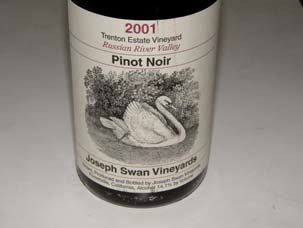 2001 Joseph Swan Vineyards Trenton Estate Vineyard Russian River Valley Pinot Noir 14.1% alc.. · Moderately dark reddish-purple color in the glass. Aromas of black cherry, spice, forest floor and old book. Impressive retention of fruit intensity offering tasty notes of dark cherries, dark raspberries, cola, seasoned oak and a hint of white pepper. Soft in the mouth with some length on the slightly astringent finish. Fine the next day from a previously opened and re-corked bottle. Drink or hold. Very good.
2002 Joseph Swan Vineyards Trenton Estate Vineyard Russian River Valley Pinot Noir 14.2% alc., 383 cases. · Moderately light reddish-purple color in the glass. Lovely bouquet of red cherries, beef, musk, old book and oak. Soft in the mouth with supple tannins, offering flavors of red cherries and berries with an earthy undertone. An elegant and relatively delicate wine showing its age. Fine the next day from a previously opened and re-corked bottle, although the finish brings a little heat. Drink or hold short term. Very good.
2003 Joseph Swan Vineyards Trenton Estate Vineyard Russian River Valley Pinot Noir 14.3% alc.. · Moderate dark reddish-purple hue in the glass. Throwing sediment. Aromas of seasoned oak, leather, wilted flowers, and nail polish remover (volatile acidity). Rich and saucy flavors of sweet red cherries and berries with a hint of spice. Clean and fresh with impressive intensity on the long finish. Tasted the following day from a previously opened and re-corked bottle, the volatile acidity had largely subsided. Hold or drink. Very good.
2004 Joseph Swan Vineyards Trenton Estate Vineyard Russian River Valley Pinot Noir 14.3% alc., 327 cases. · Dark black-red color in the glass. Still vigorous with flavor and character, offering a ripe palate of black cherry fruit accented with spice, cola and earth. Well-balanced tannins with a velvety texture and a smooth, fulfilling finish. Tasted the following day from a previously opened and re-corked bottle, the wine was still vibrant. Many years ahead. Hold or drink. Very good.
2005 Joseph Swan Vineyards Trenton Estate Vineyard Russian River Valley Pinot Noir 14.3% alc., 235 cases. · Dark reddish-purple color in the glass. Aromas of black cherries, dried roses, and carnations (slight volatile acidity). Plush and saucy black cherry and blackberry fruits with an earthy undertone. Well-structured, with bright acidity, a soft mouth feel, and a refreshing finish. Tasted the following day from a previously opened and re-corked bottle, the wine was still churning out fruit-laden aromas and flavors. Hold or drink. Very good.
2006 Joseph Swan Vineyards Trenton Estate Vineyard Russian River Valley Pinot Noir 14.5% alc., 268 cases. · Moderately dark reddish-purple color in the glass. Rather shy bouquet, offering scents of blacker fruits, marzipan, old shoe and brewed tea. On the ripe side with an array of flavors including black cherries, prune, cola, forest floor and spice. Showing some fruit age, yet retaining young tannins. Good acid spine and some length on the fruit-driven finish. Tasted the next day from a previously opened and re-corked bottle, the wine’s sappy fruit veered to the overripe side with a note of sassafras. Hold or drink. Good (+).
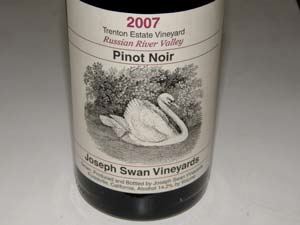 2007 Joseph Swan Vineyards Trenton Estate Vineyard Russian River Valley Pinot Noir 14.2% alc., 434 cases, $47. Large crop, yet yields still less than 2.5 tons per acre. · Dark reddish-purple color in the glass. Vibrant aromas of black cherries, spice and marzipan. Rich, fleshy and lush, with flavors of fresh, juicy black cherries and cola with an earthy undercurrent. Strikingly intense, yet has the structure and acidity to match. Tasted the next day from a previously opened and re-corked bottle, the tannins had softened, the nose offered intense dark chocolate notes, and the wine was simply great. Hold or decant if drink now. Very good (+).
2008 Joseph Swan Vineyards Trenton Estate Vineyard Russian River Valley Pinot Noir 14.5% alc., 137 cases, $48. A challenging vintage. A spring frost led to a loss of one-third of the crop. Aged in nearly 75% new French oak. · Moderately dark reddish-purple hue in the glass. Fresh aromas of dark cherries, prune, allspice, sandalwood and forest floor. The cherry core is buried in aggressive tannins with oak evident on the very dry, astringent finish. Relatively dilute compared to other vintages. A little better the following day from a previously opened and re-corked bottle. My least favorite of this vertical, but still a solid wine. Hold or drink. Good.
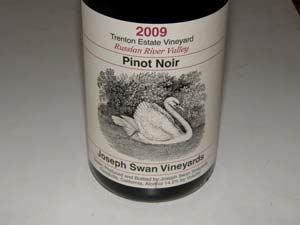 2009 Joseph Swan Vineyards Trenton Estate Vineyard Russian River Valley Pinot Noir 14.2% alc., 287 cases, $55. 40th anniversary of Joseph Swan Vineyards and the 30th anniversary of Rod Berglund’s first year of making wine. Aged in 66% new French oak. · Moderately dark reddish-purple color in the glass. The most expressive nose in the lineup showing vibrant aromas of black cherries, dark plums, mushroom, cardamom spice and a hint of vanilla. Delicious earth-kissed core of dark cherries, raspberries and plums. Rich and full-bodied, with balanced tannins and acidity making the wine quite approachable now. Great the next day from a previously opened and re-corked bottle. Could drink now because the tannins are not aggressive, but best to hold for at least another five years. Tasted a couple of months ago, but I held the review for this feature. A 2013 All-American for sure.
Sips of California Pinot NoirThere are some very special wines among those reviewed here, and by the time they are featured in my end-of- the-year All-American list, they will undoubtedly be sold out. Nearly all the wines have already been released, and I believe most of the wines are still available from the wineries. If you are a reader of the PinotFile, you are familiar with the background information on the wineries, so I won’t go into extensive detail about them. There are a few Chardonnays reviewed as well.
This majestic winery sits on top of a hill overlooking the vineyards of Napa Carneros. The winery dates to the 1980s when the Raventós family, heirs of the Spanish winemaking dynasty Codorniu, began acquiring land in Napa Valley. In 1997, it was named Artesa, from the Catalan word for handcrafted. Today, Artesa focuses on Chardonnay, Pinot Noir and Cabernet Sauvignon crafted by winemaker Mark Beringer. The artfully designed visitor’s center is one of the most popular in the Napa Valley. Visit www.artesawinery.com.
2011 Artesa Carneros Chardonnay 13.8% alc., pH 3.55, TA 0.63, 2,500 cases, $20. Aged 50% in 30% new French oak and 50% in stainless steel. 20% estate fruit and 80% neighboring vineyards. 30% MLF. A portion of the wine was lees stirred for 5 months. Bottled after 6 months of aging. · Light yellow color and clear in the glass. Fresh aromas of apple, citrus and butter. Crisp and clean, refreshing and uplifting, with flavors of citrus, pear, roasted nuts, clove spice and a touch of tropical fruits. A pleasant, easy to like wine, offering excellent value. An Estate Reserve is also offered at $35. Good.
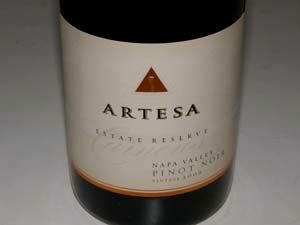 2009 Artesa Estate Reserve Carneros Pinot Noir 14.3% alc., pH 3.47, TA 0.57, 3,000 cases, $40. 100% destemmed. Aged 10 months in 40% new French oak barrels. · Moderately dark reddish-purple color in the glass. Bright aromas of fresh, very ripe plum and black cherry with hints of musk and grilled beef. Mid weight flavors of dark berries, black cherries and black plum with a hint of tar and earth. Very polished with good structural bones. A bit exotic, but very Carneros in character. Very good.
Benovia Winery and the 41-acre estate Martaella Vineyard are located in the Laguna de Santa Rosa region of the Russian River Valley. The winery produces Chardonnay, Pinot Noir and Zinfandel from both estate vineyards (Martaella, Cohn and Falstaff) and premium fruit sources under the direction of “Big Mike,” winemaker Mike Sullivan. The 2010 wines from Benovia are the finest to date and were released in the fall of 2012. Tasting by appointment. Visit www.benoviawinery.com.
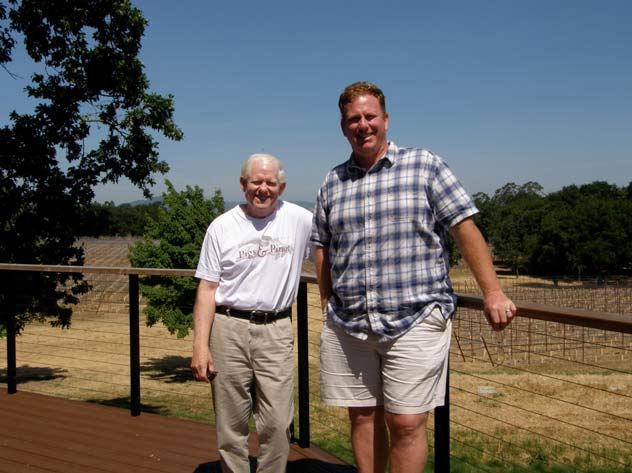
2010 Benovia Savoy Vineyard Anderson Valley Pinot Noir 14.2% alc., $56. · Medium reddish-purple hue in the glass. Deep red cherry perfume with notes of spice and cola. A flat out beautiful wine that is a killer on the palate with generous flavors of cherries and dark berries accompanied by a haunting bit of earthiness and sauvage in the background. Soft in the mouth, moderately rich in body, offering impeccable balance. The best Pinot Noir I have tasted from Savoy Vineyard in the challenging 2010 vintage.
2010 Benovia Bella Una Russian River Valley Pinot Noir 14.2% alc., $56. · Medium reddish-purple color in the glass. Shy but pleasing aromas of blackberries, char and wet earth. Strikingly flavorful with oodles of dark berry and plum fruits dressed with exotic spices and smoky oak. The flavors hit the mid palate with a vengeance and march through to the finish with intensity and persistence. Soft tannins make for easy drinking now, but this wine is the most backward in the 2010 lineup and needs cellaring. At this stage, the flavors are ahead of the aromas. That said, it is a gorgeous mouthful of fruit now. Very good.
2010 Benovia Cohn Vineyard Sonoma County Pinot Noir 14.1% alc., $65. · Moderately dark reddish-purple color in the glass. The nose is more earthy than fruity with added scents of briar and forest floor. Redolent of lush, dark, earth-infused red and black fruits picking up intensity over time in the glass. Almost bruising in character. Very softly textured with balanced tannins and a very generous finish. Very good.
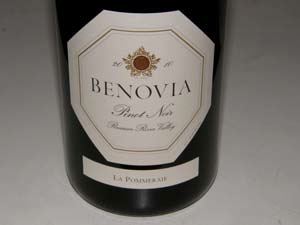 2010 Benovia La Pommeraie Russian River Valley Pinot Noir 14.5% alc., $56. · Dark ruby color in the glass. Stunning aromatics featuring bright aromas of black raspberries accented with vanilla, oak and spice. The palate is soft, plush and long featuring delicious black cherry, black raspberry, black tea and cardamom spice flavors, finishing with an appealing crispness. This is a saucy, spicy number that grabs on and brings you to attention. Even better the following day from a previously opened and re-corked bottle. An 2013 All-American for sure.
2010 Benovia La Pommeraie Russian River Valley Chardonnay 14.5% alc., $48. · Pale golden straw color and clear in the glass. Aromas of ripe pineapple, crème brûlée, petrichor and banana. Stylish and smooth on the palate with a delicious array of complimentary flavors including apple, pear, lemon, buttered brioche, oak, caramel and spice. Beautifully balanced with a long finish. The apple flavor really stands out in this wine which tastes like the best apple pandowdy you ever had. A celebration.
A family winery located in the northernmost reaches of Humboldt County, California. John and Kimberly Cabot had many years of experience in organically farming fruits and vegetables in Humboldt County when they began to plant wine grapes in 1998. Their first wine appeared from the 2001 vintage, vinified by John who is a self-taught winemaker. Larry Schaffer of Tercero Wines, a producer of Rhone varietals, plans to embark on a new joint venture with John Cabot. Pinot Noir is sourced from the Anderson Valley. Visit www.cabotvineyards.com.
2010 Cabot Vineyards Anderson Valley Pinot Noir 14.4% alc., 240 cases, $32. A blend of fruit from Nash Mill and Valley Foothills Day Ranch vineyards. A mix of Dijon 115 and 667. Aged 11 months in a combination of 75% once used and 25% new Hungarian oak barrels. · Moderately dark reddish-purple color in the glass. Aromas of cherries, cooked fruit and roasted nuts. Very ripe and sweet flavor profile featuring cherries, black currants, plums and raisins in a middleweight style supported by soft tannins and good acidity. Unchanged the following day from a previously opened and re-corked bottle. Decent.
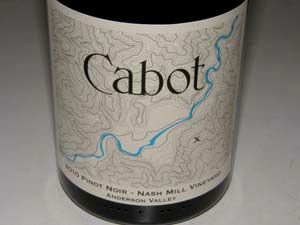 2010 Cabot Vineyards Nash Mill Vineyard Anderson Valley Pinot Noir 14.4% alc., 45 cases, $42. A stellar 4-acre vineyard source located in the deep end of the Anderson Valley adjacent Burt Williams’ Morning Dew Ranch Vineyard. Pommard clone aged in once used French oak barrels. · Medium reddish-purple color in the glass. Shy aromas of dark red cherries and raspberries with oakdriven notes of toast and smoke in the background. Wood-infused core of cherries with some verve, augmented by balanced tannins and refreshing acidity. Finishes with much fanfare exhibiting a long cherry-driven flourish. Tasted the next day from a previously opened and re-corked bottle, the wine had partially shed its oak topcoat, and the fruit was more expressive. I would give this wine a few years for the oak to integrate and by then it should be special. Good (+).
Proprietor and winemaker Gavin Chanin studied under Jim Clendenen at Au Bon Climat and Bob Lindquist at Qupé and has crafted his wines in the same facility used by these two wineries. Bill Price, owner of Classic Wines, LLC (Three Sticks) formed a partnership with Gavin Chanin in 2012 to form Price Chanin Vineyards. The new wine brand will focus on small production, single-vineyard wines beginning with the 2011 vintage. Chanin will continue to produce wines under the Chanin Wine Company label as well as the new label at a newly established winery at Bien Nacido Vineyards. Visit www.chaninwine.com.
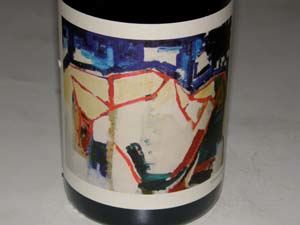 2011 Chanin Wine Company Los Alamos Vineyard Santa Barbara County Pinot Noir 13.62% alc., $48. · Medium reddish-purple hue in the glass. Initially the showy nose offers aromas of black cherries, dark berry jam and a hint of oak spice. Over time bramble and floral notes emerge. A seamless wine of considerable appeal, featuring flavors of dark berries, spiced plums and savory herbs, supported by supple tannins and bright acidity. Velvety soft in the mouth with impressive length on the hi-tone finish. Plenty of vibrancy in this wine. Very good.
Jim and Mary Dierberg farm three estate vineyards: (1) the 160-acre Dierberg Estate Vineyard just outside the town of Santa Maria with about two-thirds planted to Pinot Noir; (2) the 70-acre Drum Canyon Vineyard in the Sta. Rita Hills planted to Pinot Noir; (3) Star Lane Vineyard at the far eastern end of the Santa Ynez Valley planted to warm climate varieties. Wine production is at a winery on a ridge above Star Lane Vineyard. Nick de Luca was the longtime winemaker for both Star Lane Vineyard and Dierberg Vineyard wines, but was replaced in 2005 by Andy Alba, who had been part of the winemaking team at Dierberg Vineyard from the first vintage in 2001. Pinot Noir is produced under the Dierberg and Three Saints labels. Visit www.dierbergvineyard.com. 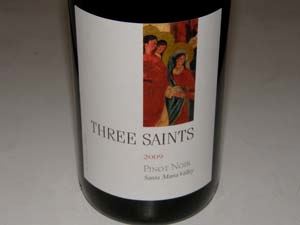 2009 Three Saints Santa Maria Valley Pinot Noir 14.1% alc., pH 3.51, $24. Sourced from estate vineyards in the Santa Maria Valley (Dierberg) and Sta. Rita Hills (Drum Canyon). 100% de-stemmed. Aged 6 months in 100% 1-year-old French oak barrels. Lightly fined, unfiltered. · Moderately light reddish-purple color in the glass. The nose offers an array of aromas including blackberry jam, black plum reduction sauce, soy, stem and herbs. Relatively light core of dark berry and Hoison sauce flavors with a hint of spice. The tannins are supple and well integrated and the acidity gives the wine some refreshing vigor. An easy drinker that is nicely balanced. Good.
2009 Dierberg Sta. Rita Hills Pinot Noir 14.5% alc., pH 3.65, $44. Sourced from Drum Canyon Vineyard planted in 2005. Low vigor rootstocks and a mix of heritage clones. Primarily native yeast fermentation. Aged 16 months in used French oak barrels. Lightly fining for clarity, unfiltered. · Moderately dark reddish-purple color in the glass. Aromas of black fruits, BBQ grill and toast. Vigorous with flavor and character offering a core of well-spiced and very ripe black plum and blackberry fruit wrapped in muscular tannins. Soft and plush on the mid palate and on the very dry finish. A full-bodied, fruit-driven wine that is a touch jammy in character. Good.
2013 marks the 20th anniversary of Littorai, the iconic producer of Pinot Noir and Chardonnay founded by Ted and Heidi Lemon in 1993. Ted’s wines, all from cool climate coastal vineyards that he either owns or directly supervises, are classic in style that age extremely well. The 30-acre farm in Sebastopol is as close to any other in the New World to the biodynamic ideal of self-sustainability with minimal input and output. A hay-bale-walled gravity-flow winery was opened in 2009 where tasting is conducted by appointment (see photo below). The wines are sold largely by mailing list with some fine restaurant distribution. Visit www.littorai.com.
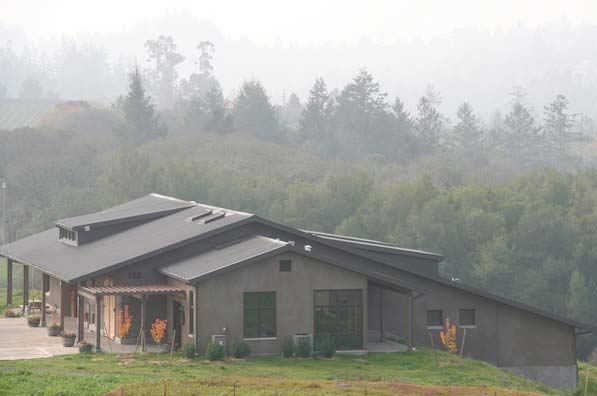
2011 Littorai Vin Gris Anderson Valley Pinot Noir 12.5% alc., $26. · Pretty golden peach color with a pink highlight. The aromas really explode from the glass when the wine is first poured. Scents of peach, nectarine and nuts. Similar in flavor to a Pinot Noir Blanc with highlights of Rainier cherries and white peaches. Bright with good integrated acidity and no detectable tannins. Love to have a chilled glass of this wine with a fresh cut slice of peach in it on a sunny summer day. Good.
2010 Littorai Hirsch Vineyard Sonoma Coast Pinot Noir 13.1% alc., $60. · Light reddish-purple color in the glass. Takes awhile to open in the glass, revealing aromas of black cherries, dried rose petals and sweet pipe smoke. Lightly endowed with cherry and raspberry flavor picking up some intensity over time in the glass. Very silky with supple tannins. A bit lean and under-ripe. Unchanged the following day from a previously opened and re-corked bottle. Good.
2010 Littorai Savoy Vineyard Anderson Valley Pinot Noir 13.7% alc., $60. · Moderately light reddish-purple hue in the glass. Nicely scented with aromas of fresh black cherry pie glaze, boysenberries and dark chocolate. Discreetly concentrated flavors of ripe cherries and berries with a riff of sauvage, supported by firm but not astringent tannins, finishing with some generosity. Solid wine but doesn’t emote. About the same the next day from a previously opened and re-corked bottle. Good.
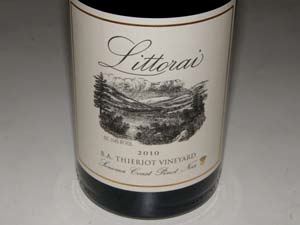 2010 Littorai B.A. Thieriot Vineyard Sonoma Coast Pinot Noir 13.4% alc., $70. · Medium reddish-purple color in the glass. This wine has one of those noses that brings you to your knees. Profuse aromas of perfectly ripe cherries and berries with an exotic spice and floral accent. Delicious middleweight flavors of cherry pie glaze, dark red berry jam, cola, spice and complimentary oak, finishing with impressive power and persistence. A very polished wine with everything in balance. Even better the following day from a previously opened and re-corked bottle. Thieriot Vineyard Pinot Noir is what first hooked me on Littorai years ago, and I relish the addiction. It just doesn’t get any better than this (although The Haven Vineyard bottling is very close).
2010 Littorai The Haven Vineyard Sonoma Coast Pinot Noir 13.3% alc., $75. · Medium reddish-purple color in the glass. A WOW! nose with effusive aromas of plum coulis, black raspberry and spice. Mouth-filling and mouth-coating flavors of black cherries, plums black raspberries and spice. Can’t say enough good things about this wine: perfectly anointed tannic structure, very slinky texture, and a big, big finish. The sauciest of the 2010 Littorai wines tasted here with the most intense finish. Even better the following day from a previously opened and re-corked bottle. This wine will give the Thieriot a run for its money. The best Haven Vineyard Pinot Noir to date and the most approachable early on.
Tiny production, very little notoriety, great Pinot. The McHenry family planted the vineyard in 1972 in the Bonny Doon area of the Santa Cruz Mountains at 1,800 feet elevation, five miles from the Pacific Ocean. The vineyard was devastated by Pierce’s Disease and ceased production in 1992. In 1997, the 2-acre vineyard was replanted. The wines are crafted in a delicate, elegant style. Aging is carried out in Francois Frères oak barrels for two years before release. Unbelievable value. 2009 Estate ($30) and 2010 Estate Swan Clone ($42) also available. Visit www.mchenryvineyard.com.
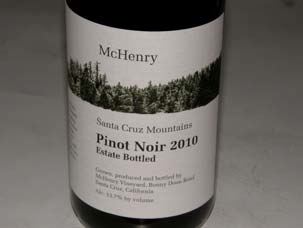 2010 McHenry Vineyard Santa Cruz Mountains Pinot Noir 13.7% alc., 320 cases, $30. The McHenrys herald the 2010 vintage as “the best.” · Moderately light deep garnet color in the glass. Lovely aromas of cherries, strawberries, sawdust, cedary oak and a bit of Christmas cheer (spice). Delicious entry, mid palate and finish showing thick fruit flavors, yet delicate in structure and mouth feel. Dark red cherry, dark strawberry, and brown spice flavors are featured. Silky soft like the hair of an angel in the mouth with very impressive finishing presence. Highly unique and quite typical of this vineyard. A perfect marriage of power and finesse.
Steve McIntyre has over three decades of experience in sustainable winegrowing in the Santa Lucia Highlands appellation. The McIntyre Estate Vineyard was originally planted by the McFarland family in 1973 and contains some of the oldest Pinot Noir and Chardonnay vines in the Santa Lucia Highlands. Steve McIntyre acquired the 80-acre property in 1987, which is now SIP certified. 37 acres of the Estate Vineyard are own-rooted Pinot Noir heritage clone, oldest in the Santa Lucia Highlands. There are 10 acres of Dijon clones 115 and 777 and 13 acres of Chardonnay Dijon clones 96 and 76. The winemaker is veteran Byron Kosuge. Visit the website at www.mcintyrevineyards.com to acquire the wines. A tasting studio is located at 1 Old Golf Course Road in Monterey.
2011 McIntyre Vineyards Estate Santa Lucia Highlands Chardonnay 14.79% alc., pH 3.51, 517 cases, $28. Dijon clone 76. Vinified at Copain Winery in Santa Rosa by Byron Kosuge. Whole cluster pressed. Fermented in new Siruge French oak barrels. Aged 8 months. 100% MLF. · Golden straw color and clear in the glass. Aromas of lemon curd, baked pear and banana pudding. Tasty core of pear, lemon-lime citrus, toffee and a hint of banana framed by bright acidity producing a juicy wine with a crisp finish. Good (+).
2011 McIntyre Vineyards Estate Block K-1 Santa Lucia Highlands Chardonnay 14.43% alc., pH 3.43, TA 0.69, 100 cases, $38. Whole cluster pressed, fermented in new Siruge French oak barrels and aged 8 months where it underwent full MLF. · Golden straw color and clear in the glass. Shy, but clean aromas of wet stones, peach, butter and acacia. A little more body and intensity than the regular Estate bottling with pleasing flavors of lemon, white peach, brioche, toffee and vanilla, offering a slightly creamy mouthfeel, and finishing dry and smooth. A Chardonnay that could benefit from a little more time in the bottle but hard to resist now. Very good.
2011 McIntyre Vineyards Estate Santa Lucia Highlands Pinot Noir 14.7% alc., pH 3.63, TA 0.62, 241 cases, $36. From the SIP Certified McIntyre Vineyard. Dijon clone 777 and 115. Indigenous yeast fermentation and indigenous bacteria malolactic fermentation. · Deep, dark purple color in the glass. Very fragrant with intense aromas of blackberry jam, black plum sauce, black currants, spice and darkly colored rose petals. Just gorgeous. Delicious earth bound flavors of black plum, blackberry and black currant with a very subtle citrus note on the finish. Full-bodied, but not heavy or jammy. Very soft and ephemeral in the mouth with gossamer tannins and impeccable balance. This wine really speaks of the Santa Lucia Highlands.
After Williams Selyem was sold in 1997, Burt Williams bought a 40-acre property in the deep end of the Anderson Valley located 4 miles west of Philo on a ridge at 750 to 800 feet above the valley. Under the guidance of vineyardist Steve Williams, the land was cleared and vines planted including cuttings from the Rochioli Vineyard, DRC suitcase selections from adjacent vineyards, and clones 23 (Mariafeld), 115, 777 and 828. Cool and windy with a southeastern exposure, the vineyard produces clean fruit with thick skins leading to concentrated wines of good color and rich tannin levels. Average yields are under 2 tons per acre. Williams crafted a small amount of Morning Dew Ranch Pinot Noir in 2008 and 2009. The 2009 wine was 100% destemmed and fermented for 15 days in open top, stainless steel tanks. It was then gravity racked to new French oak barrels. After 15 months, it was gravity bottled, never pumped, and bottled unfined and unfiltered. The 2009 wine is dedicated to the memory of Burt’s late wife, Jan. Williams has no plans to continue to produce wine after the 2009 vintage so this bottling is his swan song. The wine was released in the fall of 2012, but a small amount may still be available. Inquires should be directed to Burt Williams at Morning Dew Ranch, PO Box 487, Forestville, CA 95436.
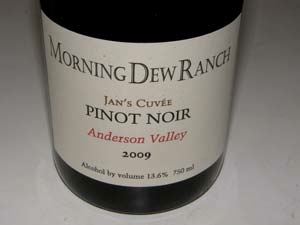 2009 Morning Dew Ranch Jan’s Cuvée Anderson Valley Pinot Noir 13.6% alc., $75. · Moderately dark reddish-purple color in the glass. Alluring aromas of black cherries, spice, white pepper and sweet pipe smoke. Waves and waves of savory fruit, offering tantalizing flavors of brandied black cherries, black raspberries, anise and tar. Very polished with balanced tannins and well-honed acidity. The unbelievably long finish lasts over a minute and I am not exaggerating. The more you taste, the more you like this special wine. Even better the next day from a previously opened and re-corked bottle. Williams Selyem Pinot Noir of the early 1990s De Ja Vu. Burt is a modest soul, but calls this, “A wine apart.”
Owner and winemaker Kristie Tacey (see photo) specializes in Russian River Valley Pinot Noir. Armed with winemaking experience at Lost Canyon and JC Cellars and a Certificate in Winemaking from UC Davis, she launched her own label in 2009. The name, Tessier, is the original French version of Kristie’s last name, Tacey. Visit www.tessierwinery.com.
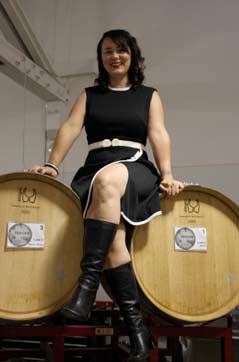 2011 Tessier Saralee’s Vineyard Russian River Valley Pinot Noir 14.8% alc., 96 cases, $35. Clones 115 and Pommard 4. Aged in 25% new French oak. · Light reddish-purple color in the glass. Quintessential Russian River Valley Pinot Noir offering aromas and flavors of fresh Bing cherries, baking spices, clove and a hint of cola and vanilla. Relatively light in weight, appealingly elegant with mild tannins, offering a silky mouth feel, and showing off some length on the finish. I really like this for its restraint and approachability. I would never guess this wine has moderately high alcohol. Very good (+).
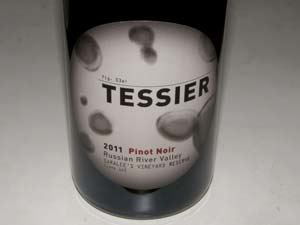 2011 Tessier Saralee’s Vineyard Reserve Russian River Valley Pinot Noir 14.8% alc., 45 cases, $42. Clone 115. Aged in 50% new oak. Decanted. · Light reddish-purple hue in the glass. Similar to the regular bottling but displaying more body and tannin and showing more potential for mid-term aging. Aromas and flavors of dark Bing cherries, baking spices and dark red rose petals with a hint of oak. Very polished and seamless, taking on more character and interest over time in the glass, but still holding back enough to suggest that the wine has a ways to go before it fully reveals itself. My only nit would be a subtle sense of heat on the finish, but I like this wine a lot.
The wine reviewed here is from the Dos Rubios Vineyard (Dos Rubios means “two fair heads” in Spanish), a partnership between Rob Jensen, founder of Testarossa, and Kirk Williams. The vineyard was designed and planted specifically to Testarossa’s wishes, and winemaker Bill Brousseau oversees all farming decisions. Testarossa was founded in 1993 by Rob and Diana Jensen and is one of the largest wineries in the Santa Cruz Mountains. The winery’s tasting room just outside the winery in Los Gatos is open daily. Visit www.testarossa.com.
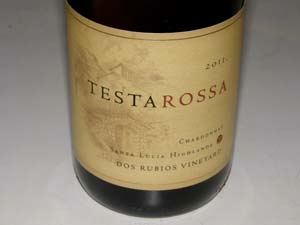 2011 Testarossa Dos Rubios Vineyard Santa Lucia Highlands Chardonnay 14.1% alc., 282 cases, $39. Clones 76 and 17. · Moderately deep gold color with a tinge of orange and clear in the glass. Very shy initially, but opens gradually and becomes quite enticing later in the day from an opened bottle. Aromas of apple, citrus, grilled peach and vanilla. Soft and smooth, with flavors of white peaches, citrus, spice and a hint of nutty, toasty oak. Perfectly fine on its own, but has the balance, acidity and restrained oak to compliment many foods. Better later in the day from an opened bottle. Very good.
A negociant wine program by Mark Steven Pope, owner of Bounty Hunter Wine in Napa, California. Waypoint is the cross section of two coordinates on a GPS, a precise and unambiguous place. In winemaking, the waypoint or vineyard is everything. The winery’s single-vineyard program offers wines sourced from partners with sites and growers that are first rate and their names are on the bottle. Visit www.bounterhunterwine.com.
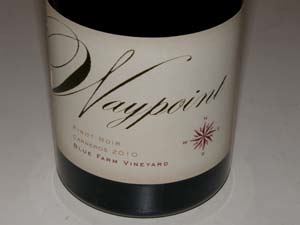 2010 Waypoint Blue Farm Vineyard Carneros Pinot Noir 14.5% alc., $35.95. This 7-acre Pinot Noir vineyard is in Anne Moller-Racke’s backyard and contains a mixture of clones. She has been farming grapes in Carneros for over 30 years and currently is director of The Donum Estate. The name of the vineyard comes from the blue Victorian farmhouse on the property. · Moderately dark reddishpurple color in the glass. Aromas of dark berries, Hoison sauce, cigar box and a hint of smoky oak. Tasty core of dark cherries and dark red berries with touch of toasty oak in the background. The fruit veers to the ripe side, but is hard to resist. A worthy mid-weight wine with silky tannins, a soft mouth feel, and a thrust of black cherry on the finish. Good.
A small garagiste winery in the Russian River Valley modeled after the original Williams Selyem winery. Coowner Denise Mary Selyem is the daughter of Ed Selyem and both she and her co-owner spouse, Kirk Wesley Hubbard, worked at Williams Selyem for several years before the winery was sold in 1997. The two-person operation works out of a small industrial space in the former apple processing plant on Gravenstein Highway in Sebastopol. All grapes are sourced for a Russian River Valley appellation Pinot Noir and four vineyard-designated Pinot Noirs. The wines are all lovingly crafted by hand and consistently top shelf through every vintage. The 2010 vintage wines are classy, elegant and exhibit admirable balance. They are highly approachable now but will age. 2010 was a challenging vintage, and the wines reflect this. In 2012, the first two acres of an estate vineyard were planted in Sebastopol using Pommard and Martini clones. The wines are sold through a mailing list. Visit www.wesmarwinery.com.
2010 WesMar Russian River Valley Pinot Noir 14.5% alc., $37. A blend of fruit from the vineyard designates. Unfined and unfiltered. · Medium reddish-purple hue in the glass. Aromas of black cherry, cola, hay and floral notes. Modest richness, tasting of black cherries, plums, cola, and black tea. Nicely balanced with silky tannins and some finishing power. Good.
2010 WesMar Oehlman Vineyard Russian River Valley Pinot Noir 14.5% alc., $40. 12 acres of Martini clone planted in 1989 and farmed by Karl and Elaine Oehlman. Unfined and unfiltered. · Moderately light reddish-purple color in the glass. Relatively light in weight in this vintage with aromas of cherries, spice, bramble and tomato. Elegantly composed with flavors of cherries, strawberries, spice and red hard candy, framed by mild tannins and bright acidity, with some persistent cherry on the finish. Fine, but doesn’t emote. Good.
2010 WesMar Salzgeber Vineyard Russian River Valley Pinot Noir 14.3% alc., $42. Unfined and unfiltered. · Medium reddish-purple color in the glass. Powerful aromatics offering scents of dark red berry preserves, sandalwood and tea leaf, picking up intensity over time in the glass. A very graceful wine with considerable charm, exhibiting intense flavors of black cherries, blueberries and plum which expand in the mouth and finish with remarkable persistence. Very flavorful, yet modest in weight, with good integration of acidity and tannins. A complete wine. Very good.
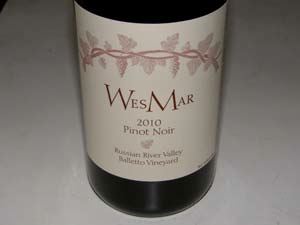 2010 WesMar Balleto Vineyard Russian River Valley Pinot Noir 14.5% alc., $40. Pommard clone. Ninth vintage from this vineyard. Unfined and unfiltered. · Medium reddish-purple color in the glass. Lovely perfume of black cherry pie glaze, black raspberries, black currant jam, balsam and baking spices. Delicious core of black cherry and plum fruit flavors augmented by lavish, exotic spices that expands in the mouth to reach every nook and cranny. Very juicy and refreshing with a glorious citrus-cherry finish exhibiting considerable vigor. I seem to gravitate to this wine in every vintage (Pommard is my paramour). Simply sublime.
2010 WesMar Hellenthal Vineyard Sonoma Coast Pinot Noir 14.3% alc., $42. 8 clones. Unfined and unfiltered. Always the most backward wine in the WesMar lineup, needing a few years to blossom. · Very difficult to pull out much on the nose. Brooding darker berry jam aroma shows up after an hour in the glass. Full-bodied flavors of blackberries and black plum sauce with a note of loamy earth. Structurally sound with balanced firm tannins. Almost creamy on the palate with impressive length on the fruit-driven finish. This wine has a long way to go before it reveals itself. Decant if you must drink now. Tasted the following day from a previously opened and re-corked bottle, the wine was much more aromatic and appealing. Very good.
A highly lauded and very successful winery producing about 16,000 cases of Pinot Noir, Chardonnay, Zinfandel and occasionally other wines from a winery at Allen Ranch (crushing and fermenting) and a new winery that opened in 2011 on Westside Road (aging, blending, storage and bottling). The new winery offers a striking contrast to its rural Westside Road location, with a two-story front constructed of steel, wood and glass, decorated with redwood salvaged from the old Almaden Winery. The wines are sold primarily through an allocated mailing list, whose members enjoy the benefits of tasting, tours and special events at the winery. The most desirable releases are snapped up after release, but don’t be afraid to inquire if there are wines of interest to you, as some may be available. The fall 2012 releases included 14 vineyard-designated Pinot Noirs ($52 to $100) including the newest vineyard sources of Olivet Lane and Morning Dew Ranch. The 2010 vintage wines are lighter and more elegant than usual with very appealing textures and excellent oak integration. Visit www.williamsselyem.com.
2010 Williams Selyem Rochioli Riverblock Vineyard Russian River Valley Pinot Noir 14.1% alc., $78. · Moderately dark reddish-purple color in the glass. Appealing aromas of brandied black cherry, dark berry, spice and faint oak, building in intensity over time in the glass. Soft in the mouth with flavors of black cherries, cola and carmelized oak with a hint of spice. A bit shallow on the mid palate and finish, but a satisfying wine overall. Good.
2010 Williams Selyem Olivet Lane Vineyard Russian River Valley Pinot Noir 14.2% alc., $75. · Moderately dark reddish-purple color in the glass. Long and persistent scents of dark cherries and berries, bramble and exotic spices including clove. Moderately rich core of blackberry and black plum fruit with a floral and loamy earth undertone and reigned-in tannins. Good mid palate impression with an elegant citrus-fused finish that slips off the back of the palate like a silk sheet. Very good.
2010 Williams Selyem Eastside Road Neighbors Russian River Valley Pinot Noir 14.2% alc., $52. · Moderately dark reddish-purple color in the glass. Very shy nose initially, but opens nicely over time to reveal penetrating aromas of spiced plum, black cherry and white pepper. Tastes like the best plum sauce you ever had. Velvet-edged fruit with gentle tannins and a deep plum-infused finish that lasts more than 30 seconds. The whole package.
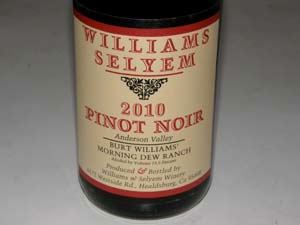 2010 Williams Selyem Burt Williams’ Morning Dew Ranch Anderson Valley Pinot Noir 13.5% alc., $75. · Moderately light in color with a reddish tinge. Generous aromas of dark red fruits, bark and maple syrup. Light and elegant in style, but not wimpy in pleasure, infused with rocket-powered flavors of red cherries and berries, blueberries, and tantalizing baking spices. The fruit is invigorated by lively acidity, framed by fine-grain tannins and full of vibrancy on the refreshing finish. I can’t say enough good things about this gorgeous wine.
This 710-acre estate has 250 acres under vine with 18 different varieties of wine grapes. The vineyards are located in three AVAs: Russian River Valley, Sonoma Coast and Chalk Hill. Grapes are supplied to 35 boutique wineries, with small amounts kept back to produce Pinot Noir and other varietals under the Windsor Oaks Vineyards label. The winemaker is Julie Lumgair and the consulting winemaker beginning in 2012 is Margaret Davenport. The estate is open to the public eighteen days each year as well as for VIP tours and tasting by appointment (707-433-3810). Visit www.windsoroaks.com. The Pinot Noir plantings are in the warmer reaches of the Russian River Valley so the wines from the 2011 vintage benefited from the growing season’s cool weather.
2011 Windsor Oaks Vineyards Russian River Valley Pinot Noir 14.1% alc., 225 cases, $35. A blend of Dijon clones. · Moderately light reddish-purple color in the glass. The wine offers an array of pleasing aromas including cherries, red hard candies, herbs and dried rose petals. On the palate, it aims to please with deep red cherry flavor underlain with a hint of cranberry and baking spice. Quite juicy, with supple tannins and a saliva-inducing, mineral-laden acid spine. A fine reflection of the vintage. Good (+).
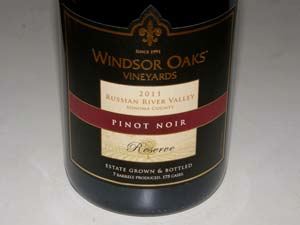 2011 Windsor Oaks Vineyards Reserve Russian River Valley Pinot Noir 14.6% alc., 175 cases, $45. A blend of Dijon clones from the finest blocks. · Medium reddish-purple hue in the glass. Inviting aromas of black cherry pie glaze with an array of subtleties including vanilla, herbs and rose petals. Extremely tasty mid weight black cherry cola flavor with a slight savory oak note in the background. Well-honed, firm tannins, softly textured, finishing with a lush cherry salute. This wine displays the ripe, lush cherry flavor that has brought notoriety to the Russian River Valley. Very good.
2009 Windsor Oaks Vineyards 4 Dijon Clones Russian River Valley Pinot Noir 14.5% alc., 145 cases, $35. Dijon clones 667, 115, 777 and 459. · Moderately light reddish-purple color in the glass. Well-perfumed with aromas of Bing cherries, smoky oak and cigar box. The middleweight core of black cherries with complimentary accents of vanilla, Coca-Cola and smoke is tasty. The wine is welcoming with modest tannins and a soft mouth feel. Good.
Sips of Oregon Pinot NoirOne of my New Year’s resolutions is not to over hype any one vintage for California or Oregon Pinot Noir. I made a big deal about the 2010 Oregon vintage and I still believe that it is a stellar vintage that produced many outstanding wines, despite the challenges the weather provided. However, I have found some Pinot Noir wines from that vintage of late that are pleasant, but seemingly unripe and somewhat dilute. These wines speak to tart red fruit and the austere style of Pinot Noir that appeals to some, but will disappoint those looking for a rush of fruit on the palate.
I am a big fan of this winery and the wines crafted by Maggie Harrison, and buy the wines every year. The 2010 Botanica bottling from Shea Vineyard was one of my 2012 Pinot Noir All-Americans. I expected big things from the estate Pinot Noir, Antikythera, as well, but found it to be curiously unfulfilling at this early stage. It was made in very small quantities because of the vintage challenges, and is now sold out, so I may not be spot on in my evaluation of this one bottle. Time will tell. The Antica Terra wines are sold through a mailing list, with additional limited retail distribution of the Antica Terra Willamette Valley bottling. Maggie is also crafting some interesting wines including a sparkler and a white Rhone, and many surprises are in store down the road. Visit www.anticaterra.com. Listen to a recent conversation with Maggie on Grape Radio, “Life with Maggie - Part 2”: www.graperadio.com/archives/2012/08/17/life-with-maggie-part-2/.
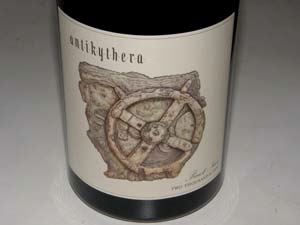 2010 Antica Terra Antikythera Eola-Amity Hills Pinot Noir 13.1% alc., $100. Released November 1, 2012. · Moderately light reddish-purple color in the glass. Aromas of dark red cherries and berries, bramble, stem, rose petal and toasty new oak. Light and soft on the palate featuring red fruit flavors with a slight green, herbal undertone. Seamless, with gossamer tannins and a very long, slightly tart red cherry finish. Tasted later in the day, the wine still had a slight vegetal and floral tone. I suspect this wine needs more time for full expression and to fully integrate the oak. Not sure how it will turn out. Good.
Planted between 1977 and 1979, Bethel Heights Vineyard was one of the first vineyards in the Eola-Amity Hills region. The initial wines were released in 1984. Bethel Heights now turns out approximately 10,000 cases yearly, most of which comes from the 49-acre Bethel Heights Vineyard and the more recently planted nearby Justice Vineyard. The winery produces several Pinot Noirs including block-designated bottles which are very special. Founded by twin brothers Ted and Terry Casteel and their wives Pat Dudley and Marilyn Webb, the winery now is largely in the hands of the second generation, cousins Mimi (viticulture) and Ben (winemaking) Casteel. The winery tasting room is open year round, but the hours vary seasonal. Visit www.bethelheights.com. I tasted the entire 2010 lineup of Pinot Noirs at the winery last summer (Volume 9, Issue 11). The 2010 Bethel Heights Pinot Noirs reviewed here have impressive color, aromatic expression, fruit intensity, and finishing length, and are among the most notable of the 2010 wines I have tasted from Oregon.
2010 Bethel Heights Estate Casteel Reserve Eola-Amity Hills Willamette Valley Pinot Noir 12.8% alc., pH 3.45, TA 0.75, 270 cases, $60. A blend of select barrels from several blocks in Estate vineyards and is meant to represent the best expression of the vintage. This is the only Bethel Heights Pinot Noir that carries the Casteel family name rather than a place name. In recent years, more of the chosen barrels have come from the second generation Pinot Noir blocks that are reaching fifteen years of age (The second generation vines and second generation winemaking team is reaching maturity together!). 50% clone 114 planted in 1996, 20% 667 from Justice Vineyard planted in 1999, and 30% from old vine Wädenswil clone planted in 1977. 100% destemmed fruit. Barrel aged 11 months in 60% new French oak barrels. · Moderately dark reddish-purple color in the glass. Fresh aromas of black cherries, black raspberries, grilled plum and rose petals. Mineralcharged middleweight flavors of red and black stone fruits and berries with beautifully balanced tannins and a refreshing riff of nervy acidity on the finish. Does not have the intense fruit flavors or density of the three block bottlings, but its vibrancy and focus is more reflective of the vintage. Very good.
2010 Bethel Heights Estate West Block Eola-Amity Hills Willamette Valley Pinot Noir 12.8% alc., pH 3.31, TA .0645, 132 cases, $50. The heart of the West Block is a 5-acre section of Wädenswil (UCD 1A) clone vines planted in 1977 on their own roots and are the oldest Pinot Noir vines at Bethel Heights. The Wädenswil tends to be late ripener with higher acidity and darker color. 100% destemmed fruit. Barrel aged 11 months in 50% new French oak barrels. · Moderately dark reddish-purple color in the glass. Alluring aromatics bursting forth from the glass with notes of dark berry preserves, black currants, dark cocoa, truffle and subtle herbs. Quite earthy, featuring rich black fruit flavors with hints of black tea leaf and tar, finishing with impressive fruitdriven intensity and length. The wine offers a mild grip of tannin and well integrated acidity. Quite typical of Wädenswil clone. Better two days later from a previously opened and re-corked bottle. Very good.
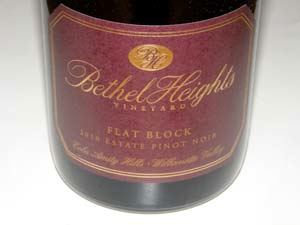 2010 Bethel Heights Estate Flat Block Eola-Amity Hills Willamette Valley Pinot Noir 12.8% alc., pH 3.45, TA 0.66, 167 cases, $58. The Flat Block is one of seven different sections of Pinot Noir planted over 37 acres in the estate vineyard. It was planted in 1979 on a flat table of the vineyard and is 100% own-rooted Pommard clone. The soil is gravelly and of a different mineral composition than the neighboring Southeast Block. This 3.3-acre block consistently has a distinctive character, usually offering the most refined and elegant Pinot Noir. Wines from Flat Block have been bottled separately since 1991. · Moderately dark reddish-purple color in the glass. This is one of those wines that makes you sit up and take notice. Marvelous aromas of black cherries, damp earth, and warm s’mores. Earthy, exotic, and erotic black cherry and black berry flavors with a compliment of spice. The fruit is robed in ripe, firm but polished tannins, invigorated with bright acidity, and blessed with a charge of black cherry flavor on the dancing finish. Seduction.com.
2010 Bethel Heights Southeast Block Eola-Amity Hills Willamette Valley Pinot Noir 12.9% alc., pH 3.45, TA 0.65, 135 cases, $50. From a 6-acre section of the estate vineyard planted in 1979 in deep red clay soil that is volcanic in origin. The vines are 100% own-rooted Pommard clone. 100% destemmed fruit. Aged 11 months in 50% new French oak barrels. Wines from Southeast Block have been bottled separately since 1991. · Moderately dark reddish-purple hue in the glass. Scintillating aromas of dark cherries, raspberry jam and cardamom spice. Intensely flavorful, tasting of ripe black fruits including cassis, and brewed black Oolong tea. The fruit has remarkable staying power in the mouth and finishes with pleasing crispness and length. An immensely satisfying wine.
A collaborative effort between artist Clare Carver and her winemaker spouse Brian Marcy. The pair moved to Oregon from Napa, bought a 100-year-old farmhouse and property in Gaston, and started a winery in 2006 producing wines from purchased grapes. Marcy has an impressive resume, having winemaking experience at Turley Wine Cellars, Neyers Vineyards, Blankiet Estate and Marcassin, all in California. Along with producing wine, the couple have established a working farm where they raise poultry, pigs, cows and egg-laying chickens. The wines are sold through a mailing list and a small tasting room at their home. Visit the very informative and well-designed website at www.bigtablefarm.com. Original art by Clare appears on every label each year and the hand lettered and pressed labels are affixed to each bottle one at a time.
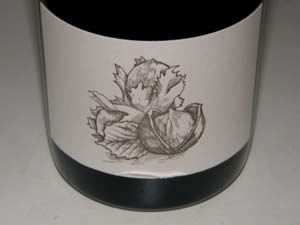 2010 Big Table Farm Wirtz Vineyard Willamette Valley Pinot Noir 13.1% alc., 90 cases, $45. Label features hazelnuts from the neighboring field. Inaugural offering from this vineyard. The vines from this multigenerational site in the northern part of the Willamette Valley average 40 years of age. · Light garnet color in the glass. Complex nose offering aromas of cherries, plums, spice, and toasty oak. Soft and elegant on the palate with restrained tannins and a good spark of acidity. Lighter weight dark red fruits are featured, especially cherry, with a topcoat of smoky oak. A pleasant wine that needs more time to integrate the oak. Good.
2010 Big Table Farm Cattrall Brothers Vineyard Eola-Amity Hills Willamette Valley Pinot Noir 12.6% alc., 118 cases, $45. Label features an old truck from the vineyard. Sourced from the oldest certified organic vineyard in Oregon that was planted in the early 1970s. · Moderately light reddish-purple color in the glass. Bright aromas of black cherries, stem and new oak. Rounded cherry core with an herbal, savory riff, offering a silky mouth feel, supple tannins and impeccable balance. Still carrying a substantial load of oak. Needs more cellaring. Good.
2011 Big Table Farm Wirtz Vineyard Willamette Valley Pinot Gris 12.6% alc.,110 cases, $28. An “orange” wine created by taking a traditionally white grape and leaving it on it’s skins to add color and texture, then pressing and finished by fermenting to dryness in neutral French oak barrels. Full MLF, unfined and unfiltered. · Medium blood orange color in the glass. An unusual wine that is challenging to describe properly. Aromas of citrus peel, melon and herbs. An easy drinker that is very light and extremely dry on the finish showing flavors of white stone fruits, white raspberries, vanilla, orange peel and toast. A welcome aperitif if chilled, or a good accompaniment to shellfish. Good.
NV Big Table Farm NV Work Horse Red 12.9% alc., 140 cases, $48. A blend of 90% Resonance Vineyard Pinot Noir (2011) and 10% White Hawk Syrah (2009). Label features Clare’s plough horse. Fermented with some whole cluster. Aged in about 30% new French oak. · Moderately dark reddish-purple color in the glass. Intensely fruity on the nose featuring aromas of cherry pie glaze and black raspberry jam, with hints of pipe smoke and oak. Rich and full-bodied on the palate with a lush core of black cherry and black raspberry fruits accented with spice and oak. Amazing amount of fruit flavor and soul packed into a wine with very low alcohol. Good.
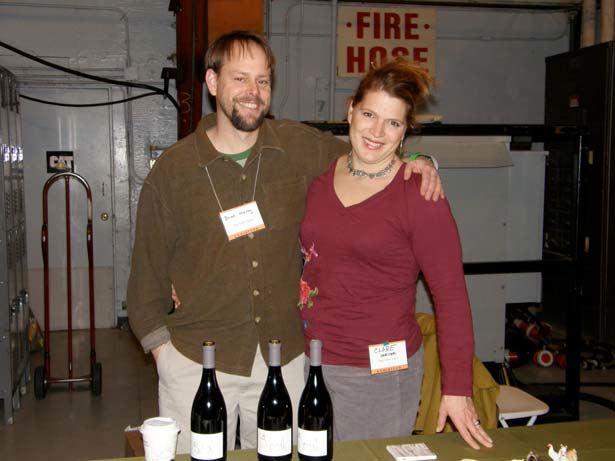
Robert Brittan is a former renowned winemaker from California who moved to the Willamette Valley in 2004 and bought a 128-acre forested tract near McMinnville. He replanted 18 acres of vineyards on the property, retaining some Swan clone plantings, and established an additional 3.5 acres of Pinot Noir in 2008. His first vintage was 2006. Two Pinot Noirs are offered: a Basalt cuvée and a Gestalt cuvée, the difference being the type of soils the vines are grown in. The wines are sold through a mailing list with some retail distribution. Visit www.brittanvineyards.com. Brittan is also the consulting winemaker for a number of Willamette Valley wineries including Winderlea.
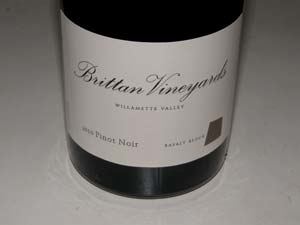 2010 Brittan Vineyards Basalt Block Willamette Valley Pinot Noir 13.5% alc., $50. Sourced from parts the vineyard with the heaviest concentration of broken sub-marine basalt, resulting in low yielding vines that produce intense flavors. Primarily Pommard, blended with 667, 777 and 115. Aged 9 months in 25% new French oak. · Moderately dark reddish-purple color in the glass. Aromas of dark red berries including cranberries, vitamins, and seasoned oak. Dark red raspberry, red plum and red cherry flavors are featured underlain with soft tannins. Finishes with a rush of sour cherry fruit and grapefruit-driven acidity. Not particularly pleasing on its own, but acid can be your friend at the dinner table, and this wine should work nicely with a salad dressed with vinaigrette, deep-fried foods or fish dishes with creamy sauces. Good.
Founder and winemaker of Brooks Wines, Portland native Jimi Brooks, passed away in 2004, and his winery was bequeathed to his young son, Pascal, who was 16 years of age in 2012 and is the youngest owner of a winery in the U.S.. Jimi’s sister, Janie Brooks, leads winery operations. In 2006, Chris Williams became the winemaker and continues Jimi’s wish to produce affordable Pinot Noir and Riesling wines. About 8,000 cases of wine are produced annually at a winery built over 40 years ago by Oregon wine pioneers Don and Carolyn Byard. Organic and biodynamic farming practices are paramount at Brooks which owns a 20-acre vineyard in the Eola-Amity Hills, formerly the property of the Byards. Tasting, which had only been available by appointment, is now offered Tuesday through Sunday at 9360 SE Eola Hills Road in Amity. Visit www.brookswines.com.
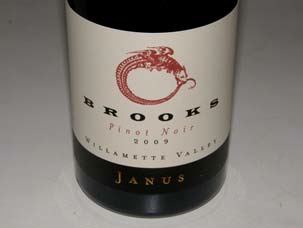 2009 Brooks Janus Willamette Valley Pinot Noir 13.8% alc., $35. The winery’s flagship bottling. · Moderately light reddish-purple color in the glass. Nicely perfumed with aromas of dark red cherries and berries, forest floor and sandalwood. Tasty core of dark red cherries with a hint of savory herbs in the background. Light on its feet with good acidity and mild tannins, finishing with some power and intensity. Very good.
2009 Brooks Rastaban Eola-Amity Hills Pinot Noir 13.8% alc., $50. Rastaban is a star, the eye of the dragon in the constellation Draco. This wine is composed of the most complete and intense barrels in the cellar and represents the best effort for the vintage. 100% estate fruit. · Medium reddish-purple color in the glass. Aromas of very ripe black cherries, sassafras, prune and a slight medicinal note. Moderately lush core of dark raspberry, black cherry and dark chocolate flavors creating quite a noticeable mid palate impression and finishing long and powerful. A juicy wine with lift from good acidity in the background. Soft in the mouth with balanced tannins. Bogged down with slightly jammy fruit and ripeness. Good (+).
2010 Brooks Temperance Hill Eola-Amity Hills Pinot Noir 11.8% alc., 200 cases, $45. Old vine vineyard. · Light reddish-purple hue in the glass. Enticing aromas of spiced dark red fruits, brier, forest floor and earth. Light, but pleasantly flavored, featuring crisp, red cherries and cranberries, finishing with a citrus note. Mild tannins and easy drinkability. Good.
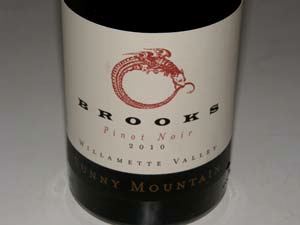 2010 Brooks Sunny Mountain Willamette Valley Pinot Noir 12.9% alc., 100 cases, $45. Old vine vineyard. · Moderately light reddish-purple color in the glass. The bright nose really reels you in with aromas of fresh, dark red cherries and berries and dried herbs. A little more body and a little less acid-driven than the Temperance Hill bottling, with hi-tone red cherry flavor. A seamless wine with supple tannins that has enough intensity to create a lasting impression. Very good.
2010 Brooks Janus Willamette Valley Pinot Noir 12.2% alc., $35. · Light reddish-purple color in the glass. The nose offers shy aromas of dark red cherries, and oak-driven espresso. Elegant, relatively light and feminine, but offering a pleasing assortment of red and black berry fruits with a savory soul, wrapped in gentle tannins. Plenty of vim and vigor due to bright acidity which makes for refreshing drinking. A perfect food wine. Very good (+).
The site of the first plantings of Pinot Noir in Oregon in 1961 by Richard Sommer who founded this winery. It is Oregon’s oldest estate winery. Dyson DeMara took the reigns of the vineyard and winery in 2003 and today produces a variety of wines from estate and bought fruit, available for tasting and purchasing in the winery’s tasting room only. Dyson likes to say, “Good wine tastes like a grape, but great wines taste like a place.” Read the full history of this winery in Volume 8, Issue 39 of the PinotFile. Visit www.hillcrestvineyard.com.
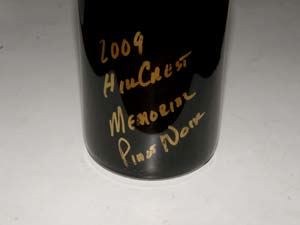 2009 HillCrest Vineyard Memorial Estate Umpqua Valley Pinot Noir (unlabeled, inquire about availability). From old, non-irrigated, lowyielding vines. · Medium reddish-purple color in the glass. A very distinctive wine with appealing aromas of black cherries, spice, sarsaparilla, chocolate mint, and smoke. Striking fruit core of ripe dark cherries, black raspberries, cherry cola, dark chocolate, spearmint, spice and sassafras with good tannin support and a generous fruit-filled finish. Definitely speaks of place and is nothing like any Pinot Noir from the Willamette Valley or anywhere else in Oregon for that matter. Drink or hold.
This estate consists of 85 acres of vineyards in the heart of the Willamette Valley in the Van Duzer corridor. Norwegian Dag Johan Sundby, a descendent of a long line of soil tillers, came to the Willamette Valley in 2004. Dan Rinke has been the viticulturist and winemaker at Johan since 2007. His background includes stints at Domaine Alfred and Rhys Vineyards in California. The winery offers Chardonnay, Pinot Gris, Vin Gris and Pinot Noir. Visit www.johanvineyards.com.
2009 Johan Vineyards Estate Willamette Valley Pinot Noir 12.5% alc., pH 3.86, TA 0.55, 1,083 cases, $28. Native yeast fermentations, 42% whole cluster. Aged 11 months in 32% new French oak barrels. · Medium reddish-purple color in the glass. Aromas of wild berries, bramble, lilac with a subtle green (stem) and medicinal note. Earthy dark red cherries and blueberries are featured in a middleweight style with a green, vegetal underpinning. Whole cluster just didn’t work in this savory wine. Decent.
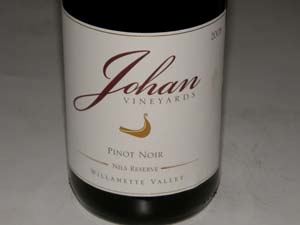 2008 Johan Vineyards Estate Nils Reserve Willamette Valley Pinot Noir 12.8% alc., pH 3.77, TA 0.56, 330 cases, $45. A barrel selection of clones 114, 115, 667 and 777. Native yeast fermentations, 50% whole cluster, aged 18 months in 40% new French oak barrels. · Moderately dark reddish-purple color in the glass. Very shy initially, opening nicely over time in the glass to revealing uplifting aromas of very ripe dark plum and berry with notes of brown spice and exotic woods. Impressive mid-palate presence of dark plum and berries with a hint of spice, balanced nicely by firm tannins and citrus-driven acidity. Well composed and still young, I would hold for a few more years. Very good.
2009 Johan Vineyards Estate Reserve Willamette Valley Chardonnay 12.5% alc., pH 3.36, TA 0.59, 142 cases, $33. Released November 2011. A winemaker selection of a blend of Dijon clones 76 and 95. Fermented with native yeasts in 50% new French oak with lees stirring, and aged 18 months where it underwent 100% MLF. The wine was bottle aged an additional 7 months before release. Minimal sulfite additions. Unfiltered. · Pale straw color in the glass with slight cloudiness (bottled with lees). Attractive scent of lemon custard and buttered brioche. Fresh and frisky, with delicious flavors of lemon, pear, apple, pineapple and yeasty goodness, silky textured, finishing with a good cut of acidity. One of the more impressive Oregon Chardonnays I have sampled.
A specialist in Pinot Noir and Pinot Gris located in a modern winery facility and tasting room in Newberg, Oregon adjacent the 18-acre estate vineyard. Owner and winemaker Scott Shull founded the winery in 1995, which is named appropriately after the birds of prey that share the property. Wines are crafted from the Estate Tuscowallame Vineyard and other well-known Willamette Valley winegrowers. Scott and Annie Shull donate 10 cents for every bottle sold to Salud The Oregon Wine Auction which supports vineyard worker health care in Oregon. The tasting room, with scenic views of Mount Hood, Adams and St. Helen’s is open seasonally and by appointment. The wines are available on the website at www.raptoridge.com and through limited retail distribution. The Raptor Ridge Pinot Noirs are typically richly flavored but the 2010 vintage wines show light color, more elegance, modesty and restraint. Back in 2002, Scott Shull said what still rings true today: “Focus on flavor, mouthfeel, and aromas in Pinot Noir and let color fall where it may.”
2011 Raptor Ridge Willamette Valley Pinot Noir 12.5% alc., 2,200 cases, $25, screwcap. Released December 15, 2012. · Light reddish-purple color in the glass. Darker fruits are featured on the nose including black cherries with a touch of spice and oak. Light and elegant, with satisfying cherry, blueberry and pomegranate flavors, finishing with an uplifting spiced cherry note. Gossamer tannins and every easy to drink. An impressive Willamette Valley blend. Buy this by the case for satisfying everyday drinking. Good (+).
2010 Raptor Ridge Olenik Vineyard Chehalem Mountains Willamette Valley Pinot Noir 13.0% alc., 100 cases, $38, screwcap. Released March 15, 2012. · Moderately light reddish-purple color in the glass. The nose is appealing with an array of aromas including dark berries, sassafras, hickory, pepper and floral accents. Tastes of the essence of blackberries with an oaky, earthy edge. Well-balanced dry tannins provide good support and bright acidity on the finish infuses the wine with vigor. Good.
2010 Raptor Ridge Gran Moraine Vineyard McMinnville Willamette Valley Pinot Noir 13.0% alc., <200 cases, $38, screwcap. Released March 15, 2012. · Moderately light reddish-purple color in the glass. A relatively austere wine with hi-tone acidity. Aromas of dark berry preserves, sweet pea and resin. Tasty core of dark berries and black plum sauce with oak and a green thread running through. Light in weight with balanced tannins and a bright finish. Lively acidity really elevates this wine. Good.
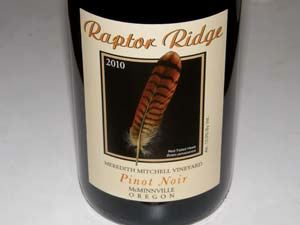 2010 Raptor Ridge Meredith Mitchell Vineyard McMinnville Willamette Valley Pinot Noir 13.0% alc., 175 cases, $38, screwcap. Release early 2013. · Moderately light reddish-purple color in the glass. Nose-filling aromas of spiced red stone fruits. Discreetly concentrated core of dark red and purple fruits including grapes, with a juicy finish that lasts and lasts. Satisfying fullness and roundness with a very appealing velvety mouth feel. Everything is in place with balanced dry tannins, zippy acidity and perfectly ripened fruit. This vineyard performed beautifully in this vintage.
2010 Raptor Ridge Shea Vineyard Yamhill-Carlton District Willamette Valley Pinot Noir 12.5% alc., 250 cases, $55, screwcap. Released November 15, 2012. · Light reddish-purple hue in the glass. The fruit hasn’t emerged on the nose. Aromas of oak and coffee are at the forefront with deep cherry and berry aromas in the background. Relatively light but satisfying featuring delicious dark berry fruit complimented by oak, finishing very long. Very young and needs time to soften the tannins and fully integrate the oak, but the pedigree of the fruit is evident. Good (+).
2010 Raptor Ridge Trig Willamette Valley Pinot Noir 13.0% alc., 50 cases, $41, screwcap. Released June 2012. A barrel select blend of 50% Shea Vineyard and 50% Meredith Mitchell Vineyard grapes. · Moderately light reddish-purple color in the glass. Nicely perfumed initially with aromas of cherry, cranberry and spice, fading in appeal over time as aromas of tobacco, herbs and geranium emerge. Light and juicy on the palate with cherry and red berry flavors, supported by fine-grain tannins and a lively riff of acidity. Decent.
Dubakella: Great Pinot from an Unexpected Place
 Carini began working with his vineyard, originally planted in 1998, just before harvest in 2004. 7 acres of Pinot Noir, clones 115 and Pommard, and 2 acres of Pinot Gris are farmed organically. At 2,500 feet on a south facing slope overlooking Hayfork Valley, the soils are rocky loam with trace veins of limestone throughout. The climate is Burgundian, with a short, intense growing season with only two months of the year sure to be free of frost (July and August). Summer day to night time temperature swings of 50 degrees are the norm with highs up to the high 90s and lows in the 40s. Carini has never been much of a Pinot Noir drinker (although the Dubakella Pinot Noirs are changing his mind) and more a “Cabernet and Merlot guy.” He produces Cabernet Sauvignon and Merlot under the Carini label. The Dubakella label is derived from the tallest mountain visible from Carini’s winery in Hayfork. It is a Wintu (a local Native American tribe) word for “black rock.”
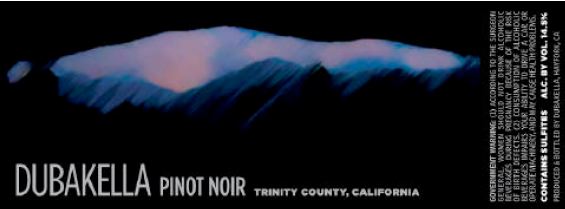 Intensive viticulture focus is practiced here. Each vine is touched by human hands over fifteen times from pruning to harvest. Yields are controlled, and ripening expedited by severe pruning and dropping of fruit at several key times throughout the season. The canopy is carefully managed by thinning and positioning canes and by light leaf removal near the fruit zone. Carini’s winemaking style is hands off. The only additions are yeast and minimal sulfur dioxide. There is no watering down, acidification, spinning cone, copper, color boosters, fining or filtration. 90% of the grapes are typically destemmed followed by a cold maceration. After inoculation, fermentations last 10 to 14 days. Aging is carried out for an extended time in 100% French oak barrels at which time the wine is bottled directly off its lees. The wine is then aged in bottle for six to twelve months before release. The 2005 vintage was the first to express the true potential of this site and region. I tasted this wine on a few occasions previously and thought enough of it to include it in an annual All-American awards issue. It is still available from the winery. The current release is the 2007 vintage, the product of a perfect growing season that allowed the fruit to ripen to perfection. Both vintages were tasted recently and included here. Visit the website at www.dubakella.com to order wine. 530-628-5258.
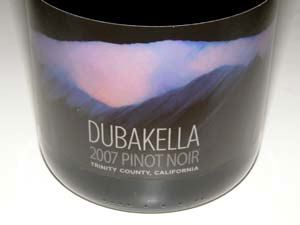 2005 Dubakella Trinity County Pinot Noir 13.9% alc., $30. · Medium reddish-purple color in the glass. Still fresh with lively aromas of black cherries, black raspberries, currants, saddle leather and shoebox. Delicious dark stone fruit and berry flavor with accents of tea leaf, dark chocolate, cola, and the faintest oak. Silk and satin on the palate with well-balanced dry tannins and a memorable finish. Drinking majestically now, but will last several more years. A superb, winery-aged Pinot Noir for $30 - how often have you seen that?
2007 Dubakella Trinity County Pinot Noir 14.9% alc., 400 cases, $30. Aged 46 months in 100% French oak barrels before bottling unfined and unfiltered. Aged over one year in bottle. · Medium reddish-purple hue in the glass. Hard to take your nose out of the glass. Enticing aromas of perfectly ripe black raspberries and strawberries. Redolent of a bowl of crushed berry fruits that are sinfully delicious. A little spicy, a little savory, a little mineralinfused: very unique and unlike any other California Pinot Noir. Crisp and juicy, with complimentary tannins, and a very long and satisfying finish. A connoisseur’s Pinot that can be enjoyed now, but has the impeccable balance to age for many years.
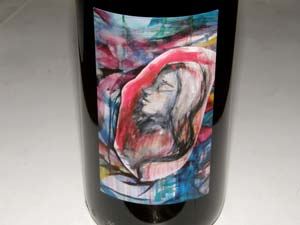 NV Dubakella “Six and Eleven” Red Wine 14.3% alc., $20. Grenache from the Rogue Valley of Oregon (68%) and Pinot Noir from Trinity County, California (32%) featuring two vintages that were five years apart (2006 and 2011). · Moderately dark reddish-purple color in the glass. Deep, focused aromas of plum, blackberry, confected black cherries, dark chocolate, spice and rose petals. Juicy and spicy with a middleweight core of tasty dark berry and dark stone fruit flavors backed by modest tannins. Certainly not an everyday combination, but a freakish combination that works. Good.
Value-Price Pinots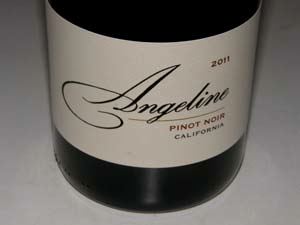 2011 Angeline California Pinot Noir 13.5% alc., $9.99, screwcap. · Medium reddish-purple hue in the glass. The aromas of spiced plum, black raspberry jam and graham really jump out of the glass. Tasty core of dark cherries and plum sauce with accents of herbs, oak, dark chocolate, spice and cherry hard candy. Moderately concentrated with balanced tannins and some fruit showing up for an encore on the finish. Good.
2009 Bridlewood Monterey County Pinot Noir 13.6% alc., $17. An E.&J. Gallo property producing a range of premium wines including Pinot Noir from Central Coast vineyards. Annual production is 125,000 cases. The winemaker is David Hopkins. · Moderately deep reddish-purple color in the glass. A lot going on in the nose but not particularly harmonious. Aromas of black cherries, black raspberries, sassafras, cardamom spice, vanilla, filter paper and cut flowers. Middleweight flavors of dark berries, currants and plums with an accent of oakdriven smoke and spice. Juicy and crisp, lacking mid palate punch and finish. Decent. (The Sta. Rita Hills bottling is significantly better).
2010 Hess Select Central Coast Pinot Noir 14.1% alc., pH 3.54, TA 0.59, 5,700 cases, $20. This wine has just been introduced by long time Hess winemaker Dave Guffy who crafted the Cambria Julia’s Vineyard Pinot Noir years ago. Aged in used French oak barrels. · Moderately light ruby color in the glass. Reserved aromas of cherries, bramble and seasoned wood. Very little fruit shows up on the nose, even with extensive coaxing. Demurely fruited with flavors of cherries, blueberries and strawberries, finishing with a kiss of red cherry. Elegant with gossamer tannins. Nothing really stands out but the wine is true to its Pinot Noir origin. Decent.
2011 Kudos Reserve Yamhill-Carlton District Willamette Valley Pinot Noir 13.9% alc., $19.99. Aged 10 months in French oak barrels. · Moderately light ruby red color in the glass. Aromas of cherries, espresso, dark chocolate and bramble. Middleweight core of tart red fruits including cherries, cranberries and pomegranates superseded by muscular tannins which hang around on the hi-strung finish. This wine is out of sorts with too much acidity and tannins to complement the delicate fruit. Not a very good wine in this vintage. Decent.
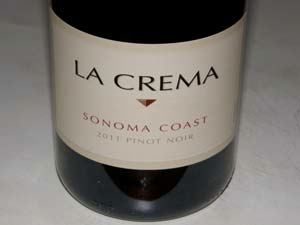 2011 La Crema Sonoma Coast Pinot Noir 13.8% alc., pH 3.70, TA 0.55, >50,000 cases, $25. 100% destemmed, 5-day cold soak, fermentation in open top tanks with daily punch downs. Aged 6+ months in 98% French oak barrels (23% new). Wines were racked once out of barrel before blending. · Moderately light reddish-purple color in the glass. Nicely perfumed with aromas of earth-kissed dark red berries and cherries, dried rose petals and subtle oak, picking up intensity over time in the glass. Middleweight flavors of dark red cherries and cranberries with hint of cola, tar, spice and oak, offering caressing tannins, and finishing with a refreshing juiciness. A solid daily drinker. Surprisingly artisan in style considering the huge production. Good.
2010 MacMurray Ranch Russian River Valley Pinot Noir 13.8% alc., $20.99. · Medium reddish-purple color in the glass. Very dull nose, with no fruit making a house call even after 45 minutes in the glass. Light weight flavors of cherries and strawberries with a hint of herbs backed by ripe tannins and complimentary acidity. Unchanged the following day from a previously opened and re-corked bottle. Awfully plain. Decent.
2011 Sean Minor Four Bears Central Coast Pinot Noir 13.5% alc., $11.99, screwcap. · Moderately light reddish-purple color in the glass. Aromas of dark cherries, strawberries, anise, pipe smoke, spice and mowed grass. Juicy and frisky, with very little tannin, offering bright flavors of cherries, strawberries, raspberries, earth and sweet smoky oak. Decent.
Pinot BriefsLaura Volkman Sells Vineyard For several years, Laura has been crafted superb Pinot Noir from her small vineyard in the Chehalem Mountains. Her three wines, St. James, Jacob Estate and Rachel Estate have always garnered rave reviews from me. I had a 2006 Jacob Estate Pinot Noir last night with dinner and it was drinking beautifully. Sadly, health issues prevent Laura from continuing the physical demands of vineyard and winery work (she was a one-woman winery, performing all the hands-on management of her vineyard and crafting the wines in the winery). She sold her combination residence and tasting room and vineyard to Bill and Sandy Sanchez of Tigard, Oregon. Bill is a scientist and Sandy is a school teacher and both are very enthusiastic about growing and producing Pinot Noir. Laura has moved to nearby Sherwood, where she will be a consultant for Potters Vineyard as well as for the new owners who produced the 2012 vintage together with Laura. Because of limited harvests in 2010 and 2011, Laura did not make a Jacob Estate or Rachel Estate. Instead, she crafted a 2010 Reserve and a 2010 St. James. The Reserve sold out quickly to the wine club. In 2011, Laura made a Pommard Block Pinot Noir and a St. James Pinot Noir. Future plans call for continuing the St. James label with the 2012 vintage and perhaps more vintages in the future. For inquires about obtaining Laura’s final solo vintages, visit the website at www.volkmanvineyards.com or contact her at 503-806-4047.
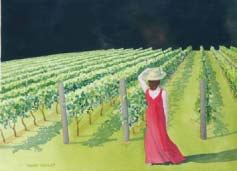 Pinot Paradise Santa Cruz Mtns 2013 The 9th Annual Santa Cruz Mountains Pinot Paradise will be held the weekend of March 22-24, 2013. A Technical Session on Minerality and Taste versus Terroir of the Santa Cruz Mountains will be followed by a Meet the Winemaker Reception at Mountain Winery in Saratoga. On Saturday, March 23, the Pathway to Pinot Paradise will invite wine enthusiasts to tour the Santa Cruz Mountains, stopping at wineries for barrel tastings and tours. On Sunday, March 24, over 30 wineries of the Santa Cruz Mountains and 20 restaurants from the Santa Cruz area will be offering their delights at Villa Ragusa in Old Town, Campbell. Winemaker dinners are also planned at Mountain Winery and Shadowbrook restaurants. Individual events and three-day even package are available at www.scmwa.com.
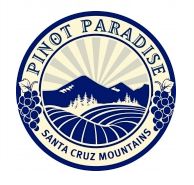 Pinot Days New York City Pinot Days returns to New York City January 26, 2013. To be held at City Winery in Lower Manhattan, attendance will be limited to 1,000 public attendees. Over 40 top Pinot Noir producers will be pouring. For information and tickets, visit www.pinotdays.com. World of Pinot Noir 2013 The 13th Annual World of Pinot Noir will be held at The Cliffs Resort in the Central Coast of California March 1-2, 2013. Serious pinotphiles know to show up for this grand event which includes seminars such as “Up Close and Personal with Kosta Browne,” “Pinot Noir on the Rocks - the Question of ‘Minerality’,” and “Alcohol and Balance Redux, and How Vintage Comes Into Play.” Many other activities are planned including a Williams Selyem Winemaker Dinner, a talk on “Terroir: The Soul of La Cote d’Or,” and a Sta. Rita Hills Focus Luncheon. The afternoon Pinot Noir by the Sea Grand Tastings allow attendees to sample Pinot Noir from more than 120 wineries. For more information and tickets, visit www.worldofpinotnoir.com. Some events have already sold out. Book your lodging also now! Pasadena PinotFest The 6th Annual Pasadena PinotFest will be held at the Altadena Town & Country Club on February 9, 2013. 100 leading California and Oregon producers of Pinot Noir will participate including names like Alma Rosa, Arcadian, Clos Pepe, Dutton-goldfield, Hitching Post, Ken Brown, La Fenetre, Loring Wine Company, Sojourn Cellars, George Wine, Gypsy Canyon and Prodigal. All featured wines can be purchased at the event at reasonable prices. Tickets are available at www.pasadenapinotfest.com. I would suggest you buy the VIP admission which allows access to the event early as the small venue becomes quite crowded as the day progresses. A portion of the PinotFest proceeds, including purchased wines, benefits the Hathaway-Sycamores Child and Family Services, one of the largest providers of children’s mental health services in Los Angeles County. West Sonoma Coast Vintners Visit New York City The WOW Festival arrives in New York on February 26, 2013, at City Winery. West Sonoma Coast Vintners is an association of wineries that farm grapes on the far western coastline of Sonoma County. Vintners participating including Cobb, Failla, Flowers, Freeman, Gros Ventre, Hartford, Hirsch Joseph Phelps, Littorai, MacPhail, Martinelli, Pahlmeyer, Peay, Red Car, Small Vines, Sojourn, Talisman, and Zepaltas. Visit www.citywinery.com.
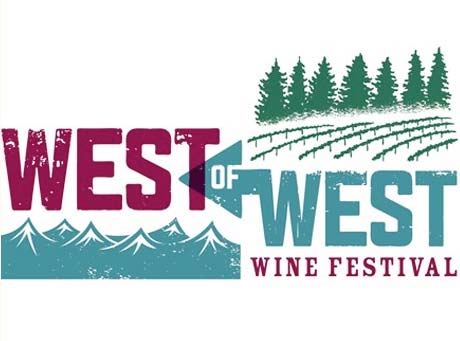 Sta. Rita Hills Winegrowers Heading to Desert Tasting of Sta. Rita Hills Pinot Noirs on January 27 at the 3rd Corner Wine Shop and Bistro in Palm Desert. Participating wineries include Cargassachi, Dierberg, Dragonette, Fiddlehead, Hitching Post, Huber, Kessler-Haak, Liquid Farm, Longoria, Paili and Zotovich. Tickets available through 3rd Corner Wine Shop and Bistro at 760-837-9600. Sponsored by the Sta. Rita Hills Winegrowers Alliance, www.StaRitaHills.com. Mornington Peninsula International Pinot Noir Celebration The Sixth Mornington Peninsula International Pinot Noir Celebration, modeled after the International Pinot Noir Celebration in Oregon, will be held February 8-9, 2013. Some tickets are still available. The event will be held at RACV Cape Schanck Resort on the Mornington Peninsula. Special guests include Jasper Morris MW, Domaine Grivot, Josh Jensen (Calera), and Ted Lemon (Littorai). Maximum attendance is 200. Visit www.mpva.com.au. New Zealand Wine Fairs in U.S. The annual tastings will be held this year in New York May 13 and San Francisco May 16. For information, and to be added to the distribution list for “NZ Dirt - The Inside Story on New Zealand Wines,” an online news update for the United States market, email felicity@nzwine.com. Longoria Opening New Winery Richard Longoria is opening a new winery on the southern side of Lompoc on Chestnut Avenue that will have a tasting room, offices and a room for dinners. Longoria has owned a winery in the Lompoc Wine Ghetto for 13 years. The winery is expected to be open sometime in September 2013. New Wine Magazine Great Wine News: pairing great wine with great living debuted with the January 2013 issue. Wine news and lifestyle stories from around the globe. Visit www.greatwinenews.com for more information and to sign up for a complimentary subscription.
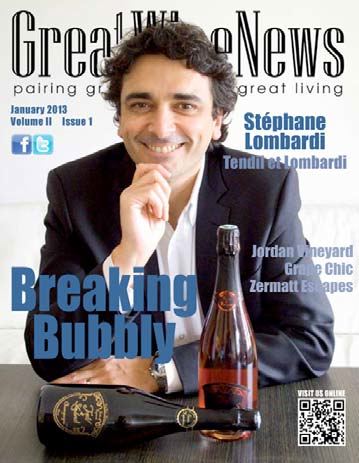 ‘Sideways The Play’ After a successful run last year in Santa Monica, California, ‘Sideways The Play’ will open in Sonoma County August-September 2013. Producers are Rex Pickett, Mike Myers and Barbara Drady. New Unnamed Dundee Hills Winery Robert Roy, the co-owner of Beaux Frères, and his son, have bought a hazelnut orchard on Worden Hill Road and plan to launch a new winery on the site with Jared Etzel, son of Beaux Frères winemaker, Mike Etzel, as the winemaker. The name of the new winery has not been announced. Powell Hill Winery The original blocks of the Maresh Vineyard in the Dundee Hills were planted in 1970, making it the fifth oldest continuously producing vineyard in Oregon. Jim Arterberry, following in the footsteps of his father, Fred Arterberry and grandfather Jim Maresh, has become one of Oregon’s most touted young winemakers. The Powell Hill Winery was launched by Jim’s mother, and the first release crafted by Jim produced 25 cases of Powell Hill Winery Maresh Red Hills Vineyard Pinot Noir from the 2009 vintage. No website yet. New Faces of Pinot Noir in Oregon: A number of new hounds have entered the Pinot race. Sweet Earth Vineyards (owners Nancy and Phil McCullum released their first Pinot Noir from the 2009 vintage priced at $20, and followed up with an award-winning 2010 Pinot Noir priced at $22: located in Monroe, near Corvallis, www.sweetearthvineayrds.com). Thomas Gerrie (Thomas Gerrie is the son of Cristom Winery owner Paul Gerrie and released his first solo effort Pinot Noir from the 2009 vintage: www.gerriecellars.com). Walnut Hill (a second value-priced label from Toluca Lane, produced from a block of 20-year-old Pommard vines near the winery’s estate vineyard in the Eola-Amity Hills AVA: www.tolucalane.com). La Famiglia (a second label from the de Lancellotti Family, first released from the 2011 vintage and crafted by de Lancellotti winemaker Robert Brittan priced at $30: see www.avalonwine.com). Lipstick on Wine Glasses There is nothing more exasperating than trying to clean lipstick residue off the rim of your fine wine stems. The secret is to take a soft cloth, wet it, add some salt to the wetted area of the cloth, and wipe the lipstick stain off. Voilá! (Getting lipstick residue off the cloth is another story)
Wine Terms that are Misused and/or MisunderstoodLake Superior State University recently announced the 38th Annual List of Words to be Banished from the Queen’s English for Misuse, Overuse and General Uselessness. Words that made the list included “passionate,” “bucket list,” and “trending.” This caught my attention and led me to think of a few wine related words that are often misused and or misunderstood. Minerality This term is so poorly defined that it is essentially worthless but wine critics including myself (reluctantly) continue to use it in their wine reviews. We know that the roots of the grapevine cannot absorb minerals or mineral flavors from the soil. What is perceived as minerality is thought by some to be due to reduced sulfur compounds that can simulate the smell of wet minerals and the taste of flint. Clark Smith (Wines & Vines November 2010) has defined minerality as follows: “An ‘energetic buzz’ in a wine’s finish similar to acidity, with which it is often confused, but further back in the mouth.” Bouquet This term is often mistakenly used to describe the aromas of a young wine. It should only be used to refer to the complex aromas of a mature wine. Variety or Varietal? The two words are often misused and interchanged with impunity. Each word, however, has a clear meaning. Variety is a noun and refers to a specific type of grape such as Pinot Noir, or many kinds of wine such as fortified, still, or sparkling. Varietal is both a noun when referring to a wine made from a single grape variety, and an adjective when used to say a wine is varietally correct. In the United States, 75% (95% in Oregon) of the wine must come from the named grape variety before it can be called a varietal. Acidity There are two main methods of expressing acidity: titratable acidity (TA) which refers to the test that yields the total of all acids present, and hydrogen ion concentration (pH) which is a measure of the strength of acidity. The higher the H+ concentration, the more acidic the solution, and since the pH is the negative log of the H+ concentration, the lower the pH, the more acidic the solution. Wine tends to fall within a range of pH of 3 and 4. The pH is a critical measurement during winemaking and ideally should be below 3.60 for sulfur dioxide to be effective during the winemaking process. A higher pH will reduce the effectiveness of sulfur dioxide and increase the chance of Brettanomyces and spoilage organisms growth. The perception of acidity in a wine is related to the titratable acidity and not pH. Titratable acidity (TA) produces the acid sensation in the mouth and is most critical for mouth feel. pH and TA values do not run parallel. A wine can have a high pH and low TA or vice versa. Punchdown or punch down? Both in correct use. Screwcap or screw cap? Both in correct use. Destemmed or de-stemmed? Destemmed is correct usage. Also destemming. Winegrower or wine grower? Both in correct use. Fermenter or fermentor? Fermenter is correct usage. Reserve This is a term that is overused and nebulous because it has so many meanings. It implies a wine of higher quality, but it can refer to a wine that is a barrel selection, one that has been aged longer, or a wine sourced from the best blocks in a vineyard. Wineries sometimes substitute the word cuvée, a fancy French way of saying a blend. It is often simply a marketing strategy for selling wine (or charging more) in which case it may take on other configurations such as vintner’s reserve, limited reserve, grand reserve, or special reserve (Kendall-Jackson produces thousands of cases of “Vintner’s Reserve Chardonnay). Estate Bottled This indicates that 100% of the wine came from grapes grown on land owned or controlled by the winery, which must be located in an AVA. The winery must crush and ferment the grapes, and finish, age and bottle the wine in a continuous process on their premises. The winery and vineyard must be in the same AVA. |